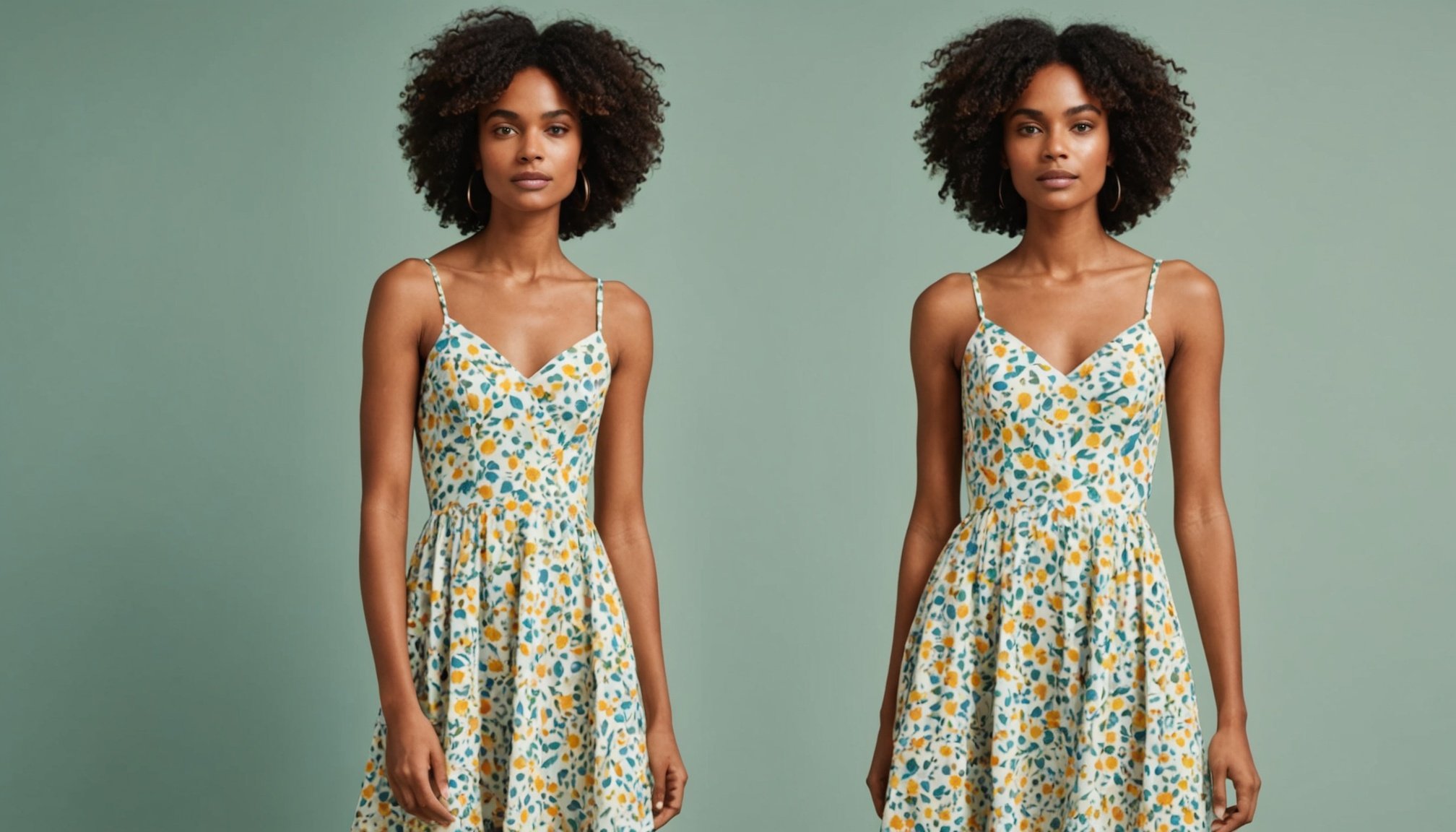Overview of Eco-Conscious Fabrics
Eco-conscious fabrics are revolutionising the fashion industry, emphasising the need for sustainable fabrics and eco-friendly materials. These fabrics are crafted with the reduction of environmental impact in mind, often utilising renewable resources and minimising waste. The significance of eco-conscious fabrics lies in their potential to curtail the extensive pollution and resource depletion traditionally associated with textile manufacturing.
In recent years, sustainability in the fashion industry has gained momentum, pushing brands toward more environmentally friendly practices. This shift is driven by increased awareness of climate change and consumer demand for transparency in production processes. The adoption of sustainable fabrics supports this by reducing the carbon footprint of garment production and promoting ethical labour conditions.
Also to read : Your ultimate guide to choosing the perfect steampunk jacket
The trend towards eco-friendly summer fashion is particularly noteworthy as warmer months call for breathable, lightweight materials. Fabrics like organic cotton, linen, and hemp are increasingly popular, offering not just comfort but also reduced environmental impact. As consumers seek fashionable yet considerate choices, the rise in eco-conscious attire mirrors a growing commitment to sustainability. This evolving trend not only benefits the planet but also encourages other sectors to reconsider their environmental strategies.
Popular Types of Eco-Conscious Fabrics
Exploring fabrics that prioritise the environment is key to sustainable fashion. This section highlights some of the most noteworthy eco-friendly materials.
This might interest you : Exploring the Most Durable Fabric Blends for Everyday Clothing in the UK”s Unpredictable Weather
Organic Cotton
Organic cotton is praised for its breathable and soft nature, making it a prime choice for summer wear. Unlike conventional cotton, it is grown without harmful chemicals, preserving soil health. Many brands now offer stylish summer designs, with patterns ranging from minimalist to vibrant prints, providing options that combine sustainability with fashion.
Tencel
Tencel stands out for its moisture-wicking and gentle touch. Derived from wood pulp, it requires less water than standard fabrics, proving perfect for conscious consumers. When compared to traditional materials, Tencel offers both comfort and environmental benefits. Renowned brands have started integrating this fibre into their collections, championing its sustainable credentials.
Linen
Linen’s breathability and cooling effects make it an ideal summer fabric. Its natural fibres allow for excellent air circulation, offering unmatched comfort. Designers have long favoured linen for its timeless aesthetics and ecological advantages, crafting pieces that are both stylish and sustainable.
Hemp
The cultivation of hemp is eco-beneficial, enriching soil quality while requiring minimal resources. Hemp fabrics are durable, providing unique styles in summer dresses. Emerging brands are increasingly turning to hemp, focusing on its potential for sustainable fashion innovation.
Recycled Polyester
By repurposing plastic waste, recycled polyester reduces landfill burden. While maintaining durability and versatility, it offers chic, modern designs. Many fashion leaders have committed to using recycled polyester, showcasing its potential in eco-conscious apparel.
Benefits of Using Eco-Conscious Fabrics
Choosing eco-conscious fabrics over conventional ones significantly impacts our environmental footprint. Unlike traditional materials, these fabrics are produced with a focus on reducing pollutants and conserving resources. This transition supports the preservation of natural ecosystems by minimising the waste and energy consumption typically associated with fabric production.
When it comes to comfort, sustainable fabrics offer a distinct advantage. They often incorporate organic cotton, bamboo, or hemp, which are breathable and gentle on the skin. This natural composition enhances wearer satisfaction by providing increased comfort and reduced irritation, while simultaneously avoiding harmful chemicals found in non-eco-friendly options.
In terms of durability, eco-conscious fabrics often outperform their conventional counterparts. Many of these materials boast extended lifespans due to their resilience and ability to withstand regular wear and wash. This durability equates to long-term cost savings, as eco-friendly fabrics typically require less frequent replacement, making them a wise investment.
Moreover, style doesn’t have to be sacrificed. Eco-conscious fabrics are available in various designs and textures, catering to a wide range of fashion preferences, ensuring stylish and sustainable choices co-exist.
Styling Tips for Eco-Conscious Summer Dresses
When it comes to assembling an eco-friendly summer wardrobe, the right Fashion Advice can elevate your look while maintaining an environmentally conscious approach. One way to enhance your outfit is by pairing eco-friendly dresses with eye-catching accessories. Think along the lines of sustainable jewellery or a chic, recycled tote bag, which adds flair without compromising on ethics.
Exploring Color trends and patterns can greatly influence your eco-friendly choices. This summer, earthy tones like ochre, muted greens, and natural beige are on the rise. These colors not only offer a fresh twist to your outfit ideas but also complement the ethos of sustainability. As for patterns, botanical prints and hand-dyed designs can infuse an organic touch into your summer wardrobe.
Another tip is to mix sustainable fabrics, such as organic cotton or linen, with other natural textiles. Incorporating diverse textures into your outfits can make your look more dynamic and engaging. Additionally, these fabrics are breathable and comfortable, making them ideal for the warmer months. By keeping these factors in mind, your fashion choices this summer can blend style and eco-consciousness seamlessly.
Care Tips for Eco-Conscious Fabrics
Maintaining and caring for eco-conscious fabrics requires thoughtful strategies to ensure both sustainability and longevity.
Washing and Cleaning Recommendations
For these fabrics, use cool water and a gentle cycle when washing. This protects the fibers and reduces energy consumption. Opt for eco-friendly detergents that are biodegradable and phosphate-free. Such products minimize environmental impact while being gentle on fabrics. Avoid bleach or harsh chemicals, which can damage fibres and shorten garment life. Hand washing can also be a great alternative for delicate sustainable materials.
Storage and Preservation
Proper storage is equally pivotal. Keep summer dresses made from eco-friendly materials in a cool, dry place, ideally using garment bags to prevent dust and damage. During winter, fold them gently and store them in breathable containers. Pay attention to signs of wear like thinning or small tears. Early repair not only extends the life of garments but also upholds their ethical value. Remember, sustainable clothing management is as much about mindful care as it is about making the right purchase choices.
Notable Brands and Retailers in the UK
In today’s fashion scene, sustainable fashion brands are making significant strides in the UK, committed to eco-friendly practices. These brands focus on crafting stunning collections, especially eco-friendly dresses that combine style with sustainability. One such brand, Thought Clothing, transforms organic cotton and bamboo into versatile outfits, providing a guilt-free way to enjoy fashion.
Moreover, ethical retailers across the UK are paving the way for a greener wardrobe. Take Marks & Spencer, for example. With its Plan A campaign, the retailer emphasizes eco-conscious initiatives, bringing sustainable options right to consumers. Their collaborations with smaller sustainable fashion brands further cement their role as leaders in this space.
For those keen to shop from the comfort of their home, there are various online platforms dedicated to ethical shopping. Websites like Wolf & Badger offer a curated selection of sustainable summer dresses, showcasing innovative brands that prioritize eco-conscious materials. Meanwhile, ASOS Marketplace provides a platform for independent sellers focussed on sustainable fashion, granting consumers access to unique, environmentally-friendly choices.
By choosing these eco-conscious companies, consumers contribute to a cleaner, more sustainable future while enjoying the latest in trendsetting fashion.
Visuals and Engagement
Visuals play a pivotal role in capturing readers’ attention, especially when exploring diverse dress designs. Images of eco-friendly dresses vividly illustrate how fashion can meld style with sustainability.
By integrating fashion imagery into the content, readers can envision these designs, offering an engaging and immersive experience. High-quality photos of natural colours and textures make the narrative more relatable and tangible.
Moreover, fabric swatches are an effective tool to highlight the unique textures and materials of these designs. Physical and digital swatches allow readers to appreciate the nuances in fabric choices and understand their environmental impact. Images of organic cotton, recycled polyester, or hemp fabrics, for instance, can foster a deeper appreciation for sustainable textiles.
Additionally, infographics can efficiently convey sustainability statistics in fashion. They transform complex data into digestible visuals, enhancing comprehension and retention. Infographics showcasing reduced water usage or lowered carbon footprints in dress production provide readers with concrete evidence of sustainability efforts.
By focusing on fashion imagery, dress designs, and fabric swatches, readers can more readily engage with the topic, making informed decisions about their fashion choices.











